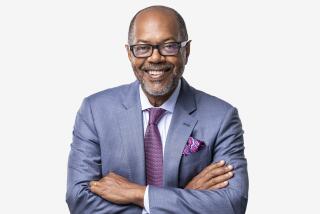Legendary Editor Leaving New Yorker
NEW YORK — William Shawn, the legendary editor of the New Yorker magazine for 35 years, will step down, it was announced Monday. He will be replaced by Robert Gottlieb, president and editor in chief of Alfred A. Knopf Inc., the New York book publishers.
Both the New Yorker and Knopf are owned by Samuel I. Newhouse Jr., who purchased the magazine in 1985 for $142 million. Writers at the magazine said the 79-year-old Shawn was in the process of arranging his own departure when the announcement was made.
Staff Members in Tears
Nevertheless, the move startled many in the publishing industry and brought tears to many on the staff of the magazine, which for more than a half century has been home to some of the nation’s greatest writers.
“You can’t replace Mr. Shawn, but I’m following him,” Gottlieb said in an interview. “It happened very quickly. Mr. Shawn, I believe, decided to retire. Mr. Newhouse asked me if I would take over, and I decided I would.
“It’s been a very emotional day,” Gottlieb said.
The 55-year-old Gottlieb, who has no magazine experience, said he did not know when he would formally replace Shawn. “This has all just taken place . . . whenever is convenient for Mr. Shawn,” he said. “It’s all family,” he added, referring to Newhouse’s ownership of both businesses.
Shawn was not available for comment.
Replaced Harold Ross
Shawn was only the second editor of the New Yorker, succeeding Harold Ross in 1952. He was deeply admired by writers, whom he fiercely protected and who referred to him with reverence as “Mr. Shawn.” James Thurber, E. B. White, S. J. Perelman, John Updike and John Cheever all wrote for the magazine.
Mary D. Kierstead, an editor at the magazine, said on Monday, “I’m in shock. I can’t talk about it (Shawn’s departure). It was a complete surprise.”
Shawn dominated the magazine, imposing rigid separation between the editorial and business departments until Newhouse took over.
Some writers described Shawn, a small balding man with a tendency to blush easily, as “something out of the 19th Century.” A standard joke was that, if you were in an elevator and there were three people and Shawn, you might feel there were only three people.
But all that was deceptive. Until the arrival of Newhouse, his control of the magazine was ironclad.
A frequent contributor to the magazine once said that Shawn “fosters a climate but runs it . . . absolutely . . . without any force in a brutality sense . . . . With Shawn, there is steel, but you don’t see it openly.”
When writer Calvin Trillin first came to the New Yorker, he shared an experience common to many of the magazine’s fledgling writers. Shawn explained to him that all editing is done “as a suggestion.”
In recent years, the New Yorker faced stagnating circulation and declining advertising pages. In 1985, ad pages dropped to 2,990--the lowest total since 1945. Revenues also sharply declined.
Gottlieb was asked about his own leadership style and what changes he expected to make. “I’m a different person, so I assume there will be changes,” he said.
More to Read
Sign up for our Book Club newsletter
Get the latest news, events and more from the Los Angeles Times Book Club, and help us get L.A. reading and talking.
You may occasionally receive promotional content from the Los Angeles Times.







